Tight Line Presentation Video
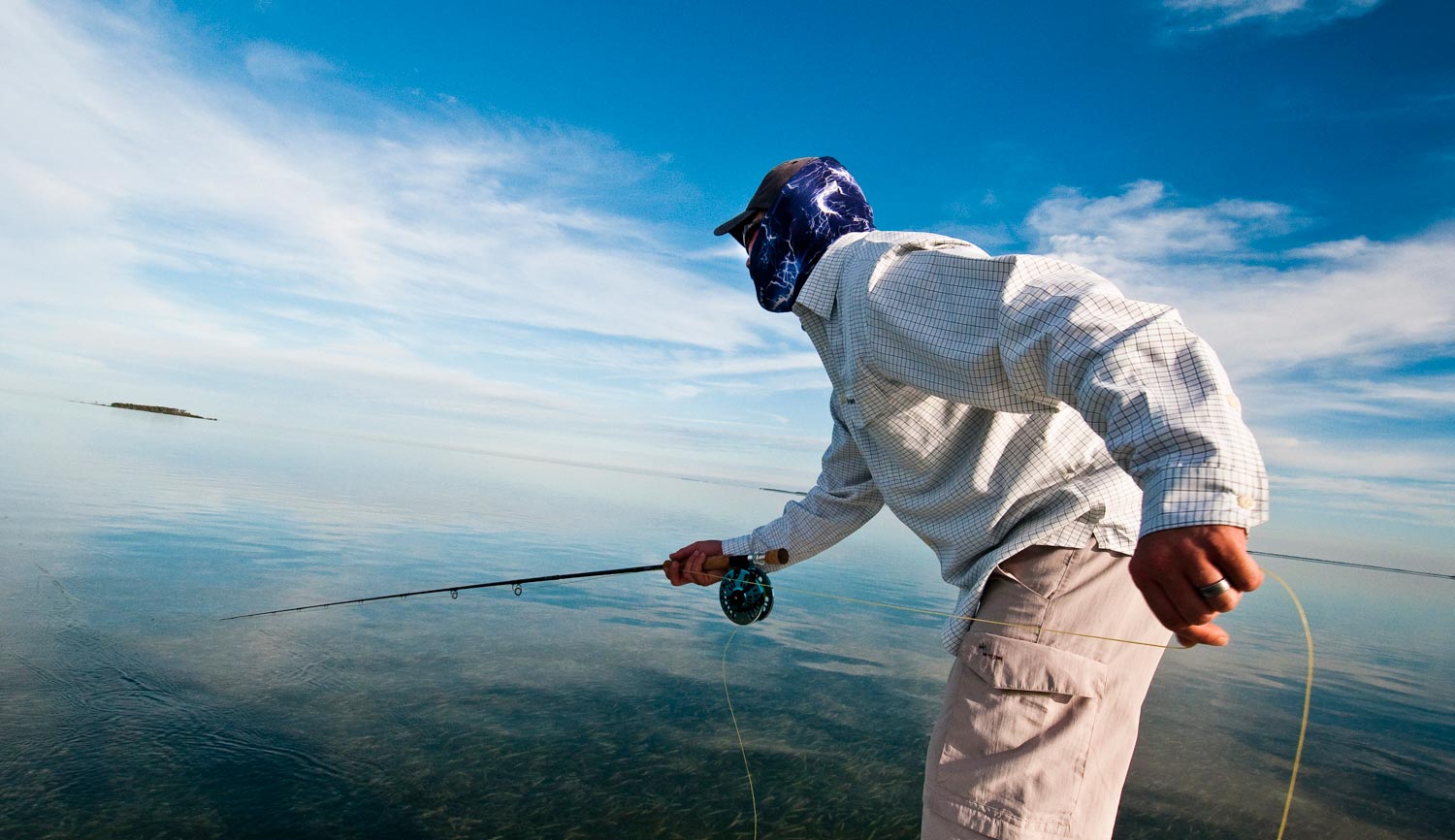
In fly fishing slack is always a bad thing.
One of the most common mistakes I see anglers make, when flats fishing, is presenting the fly with slack in the system. If your fly doesn’t have a lifelike look, it’s just another piece of trash to the fish. Even when the fly is sitting still, a tight line keeps it looking alive and tasty. It’s crucial that you come tight to your fly immediately.
There are a couple of things that most beginning saltwater anglers do wrong. The most obvious is failing to turn over the leader. Especially when casting into the wind. The only cure for this is consistent practice.
A practice drill I like for this is to set out a target on the lawn or in the water and make repeated casts to the target, with no false casting. Just pick the line up and put it back on the target. To consistently hit the target, your leader has to turn over fully every time. It’s great practice.
Another very common mistake it to hold the rod tip too high. When you make a presentation cast in saltwater, the tip of your rod should drop into the water. The water tension creates a zero slack dynamic, which will move the fly on the first strip.
Watch this video for more tips on making a good tight line presentation.
Read More »Why Don’t Saltwater Anglers Use Nets?
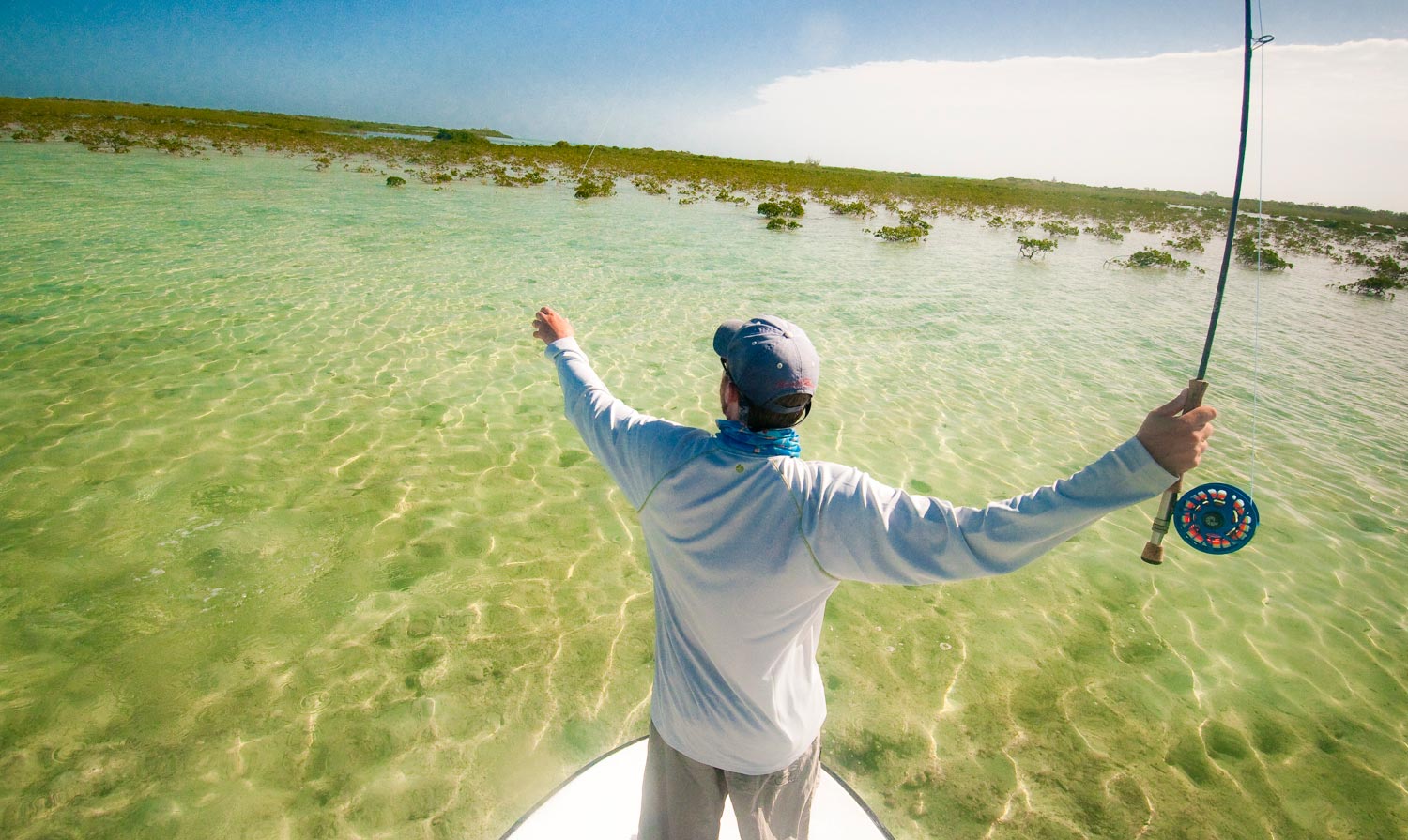
It is just some kind of macho thing?
That’s a question I got from a reader a while back. It’s a good question and it raises an even better question. As saltwater anglers, should we use a net?
First off, it’s not accurate to say that all saltwater angler do no use nets. Tournament permit anglers, for example, use them. Hose guys are not going to take the chance of loosing a permit at the boat. Most saltwater anglers do not, however, and there are several good reasons.
The most obvious is the size of some of the fish we target in the salt. What kind of net would you use for a tarpon over a hundred pounds and how many guys would you want hanging on to it? It’s simply not practical.
What about species like bonefish, redfish and permit? Those fish will easily fit in a net. To understand why most anglers still land these fish by hand you need to understand a little about flats fishing.
It’s all about making one perfect shot. You’re standing on the bow with ninety feet of line stripped off in the floor hunting fish. When you find them, you may only get one shot and everything has to be perfect. Among the ten-thousand things that can go wrong is that ninety feet of line finding that landing net. Space is at a premium in a flats boat and finding a place for it, that’s out of the way is a challenge.
The biggest reason most saltwater anglers don’t use nets is
Read More »2 Ways to Determine the Sex of a Trout
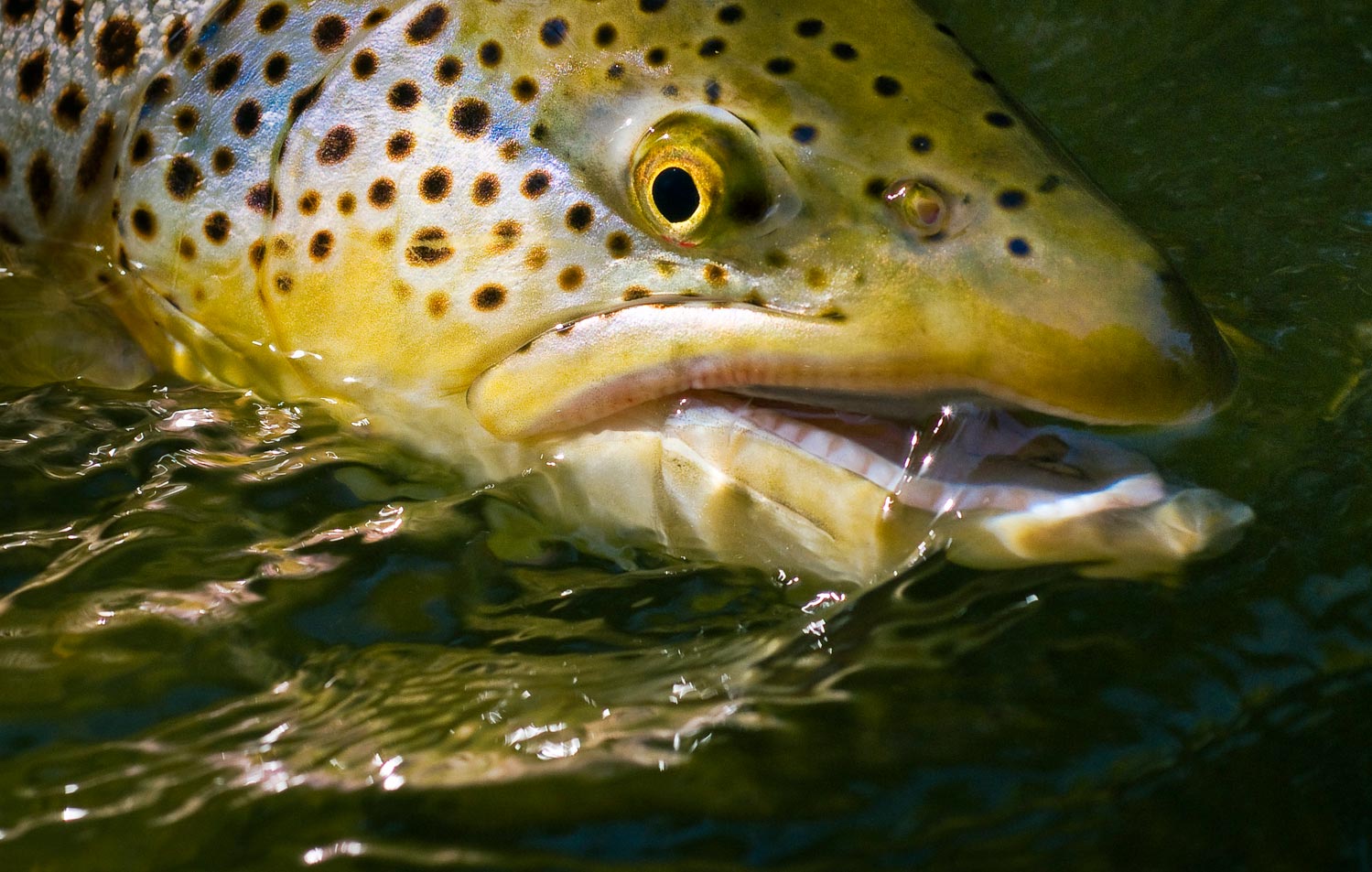
Lets talk about sex!
One of the things I love most about being a part of Gink & Gasoline, is educating our readers. Today’s post, talks about two ways to determine the sex of a trout. Over the years, I’ve found that the majority of my clients have a hard time determining whether a trout they catch is a male or female. Below are two ways to quickly identify the sex of a trout.
1. LOOK AT THE MOUTH
sex-of-trout
One of best ways to distinguish the sex of a trout is to examine the mouth. Female trout all have a short rounded nose or upper jaw, while male trout have a more elongated snout. If your trout has a lower jaw with a kype, it’s a male for sure. Although the mouth of a female trout will grow larger as it ages and increases in size, the mouth will never grow a kype (hooked lower jaw). Upon becoming sexually mature, male trout will begin to grow a pronounced kype. At first, it will just be a tell-tale sign, but as a male trout ages, its kype will become more pronounced. It’s important to point out that even for trout that aren’t sexually mature, an angler can look at the mouth of a trout and see either a uniform mouth with a short rounded nose (female), or a elongated snout with a slightly longer lower jaw (male).
2. LOOK AT THE ANAL FIN
trout-anal-fin
(Left) Male, (Right) Female
Sexually mature male and female trout for both rainbows and browns have different looking anal fins. A male will have a slight convex anal fish “(“, while a female trout’s anal fin will be slightly concave “)”. I’m not sure if cutthroat trout are in the same boat. I’ll have to depend on the community who regularly catch them, to provide us their insight and confirm this.
IS THERE A THIRD WAY TO IDENTIFY A TROUT’S SEX?
When I was writing this post, I ran across a couple references
Read More »lightspeed
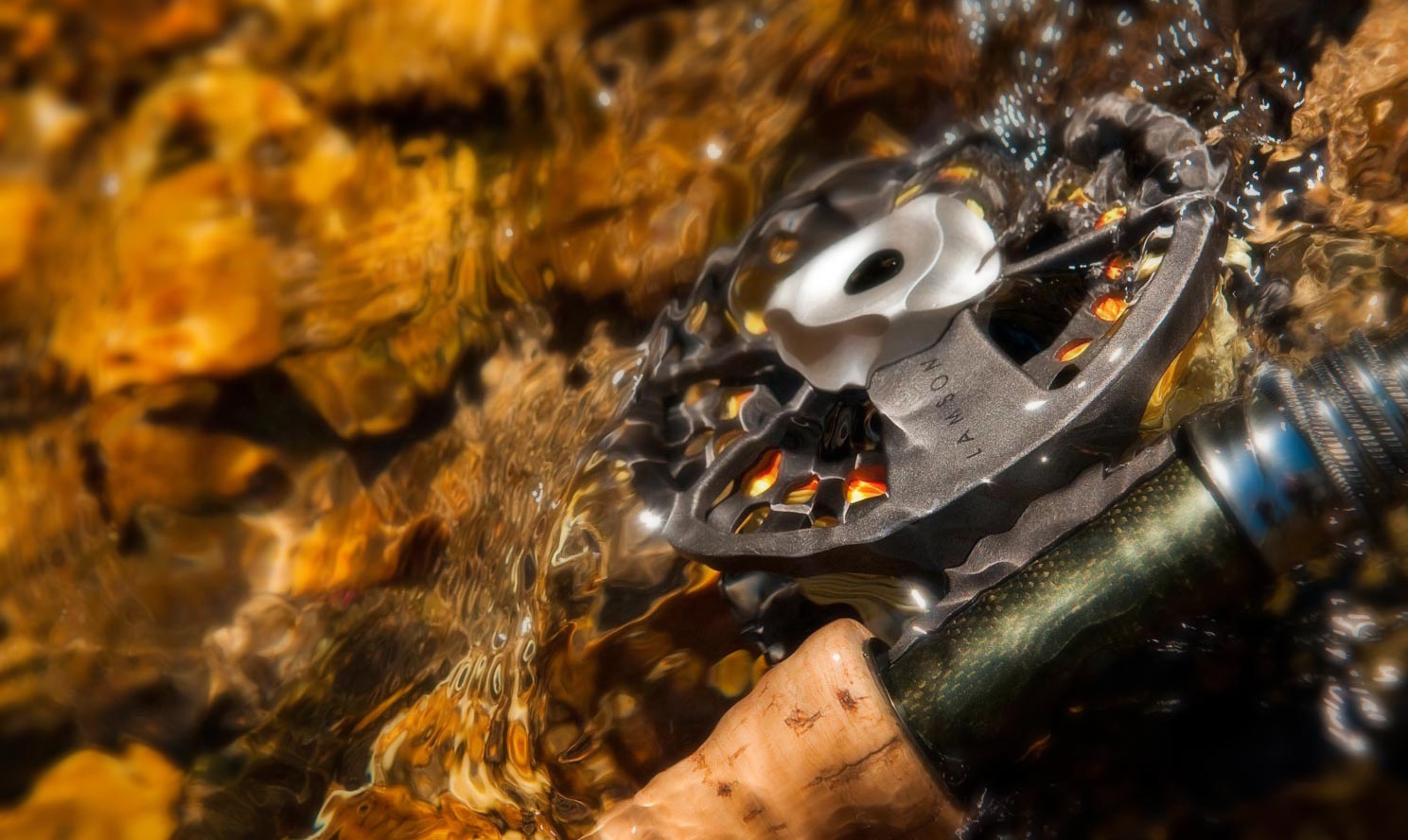
By Mark Greer
Yesterday I mailed in the warranty card for a Lamson LightSpeed reel.
Nothing significant about that. It happens all the time. The funny thing is, that warranty card had sat in the box it came in since late 2005. I knew about the warranty card. I purposely left it in the reel box. I felt that the LightSpeed was such a well-designed and manufactured reel that I’d never need to use the warranty service. When I finally sent it in, it wasn’t because of a problem with the reel. It works as great as it did when I first got it. I sent the warranty card in because it has immense sentimental and emotional value to me.
My late son, Anthony, got that LightSpeed for me when he was working out at Flaming Gorge Resort, as a guide. He gave it to me, along with a new pair of SIMMS wading boots and waders, and a new RIO fly line, during a weekend trip that I’d made to visit him one fall. The gift blew me away. It was completely unexpected and I knew that he’d likely saved his guiding money (which was scarce) to purchase it, and that he had probably also skimped on meals to be able to give his father a nice reel. He’d eaten a lot of eggs when he was guiding, because they were a cheap source of protein.
That’s how he was. Always doing things for other people. To make them happy or to help them out, even giving away his own personal gear to those that had an interest in the sport but couldn’t afford the necessary gear to get out on the river.
So, the other day
Trout Fishing and the Full Moon
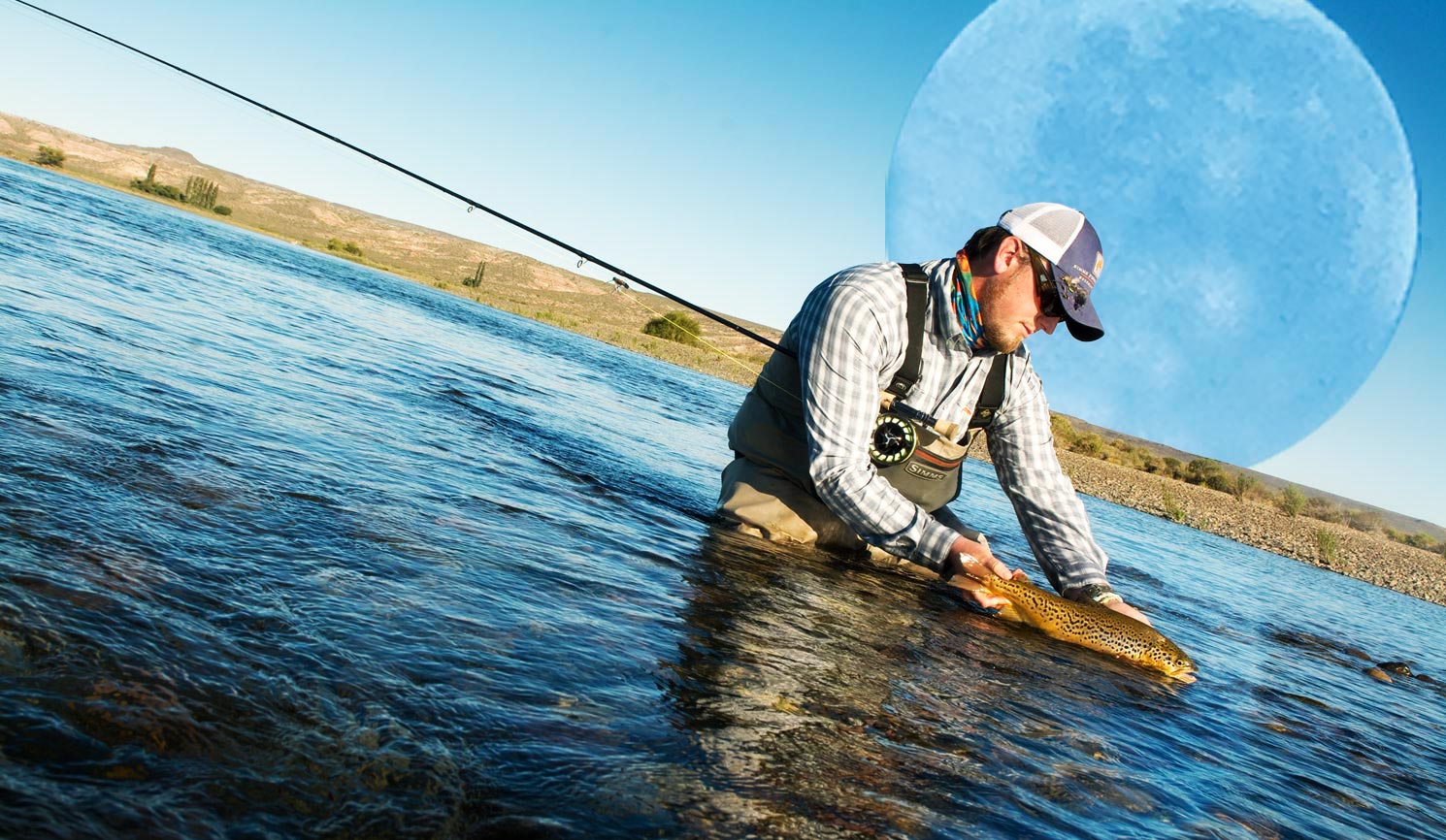
The days can be slow, but the nights can be epic.
I got an email from a reader the other day asking me to solve a fly fishing dilemma. He and a friend had fished hard the day before and caught very few trout. It was a perfect day, perfect water temperature and “stickbait” (caddis larvae) were everywhere, but no feeding trout. “Could it be the full moon?” he wondered.
That’s exactly right. Given the choice, trout will always feed at night. They are more comfortable in the cover of darkness and their eyes, having no iris to regulate how much light enters the eye, are better suited for low light. When the moon is full, trout will focus on nocturnal feeding and sleep during the day. (More on how fish sleep HERE.)
The caddis larvae are an important part of the equation. In the spring and summer when caddis are active you will find those larvae moving around, getting ready for the evening hatch. Caddis hatches can be heaven at night and that’s what the fish are waiting for. Caddis flies emerging under a full moon are easy pickings for trout. Well worth staying up late, for fish and fisherman alike.
Try this next spring full moon
Read More »Sunday Classic / The “Shake and Bake” Method of Fly Dressing
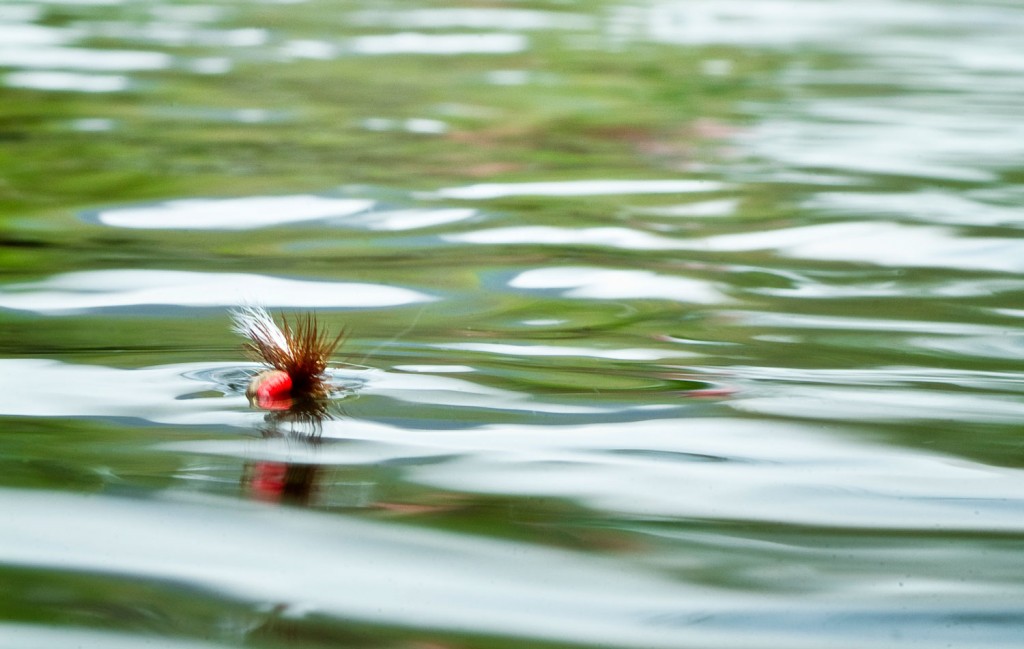
Will Sands shows me how he dresses his fly. “it’s like frying chicken” he tells me.
I love that, the guy from Colorado telling the boy from Georgia about frying chicken. I’ll admit that I was skeptical at first but Will’s “Shake and Bake” method really works, for flies anyway. That’s not how we cook chicken where I’m from.
Saturday Shoutout / Gear Vs Fly
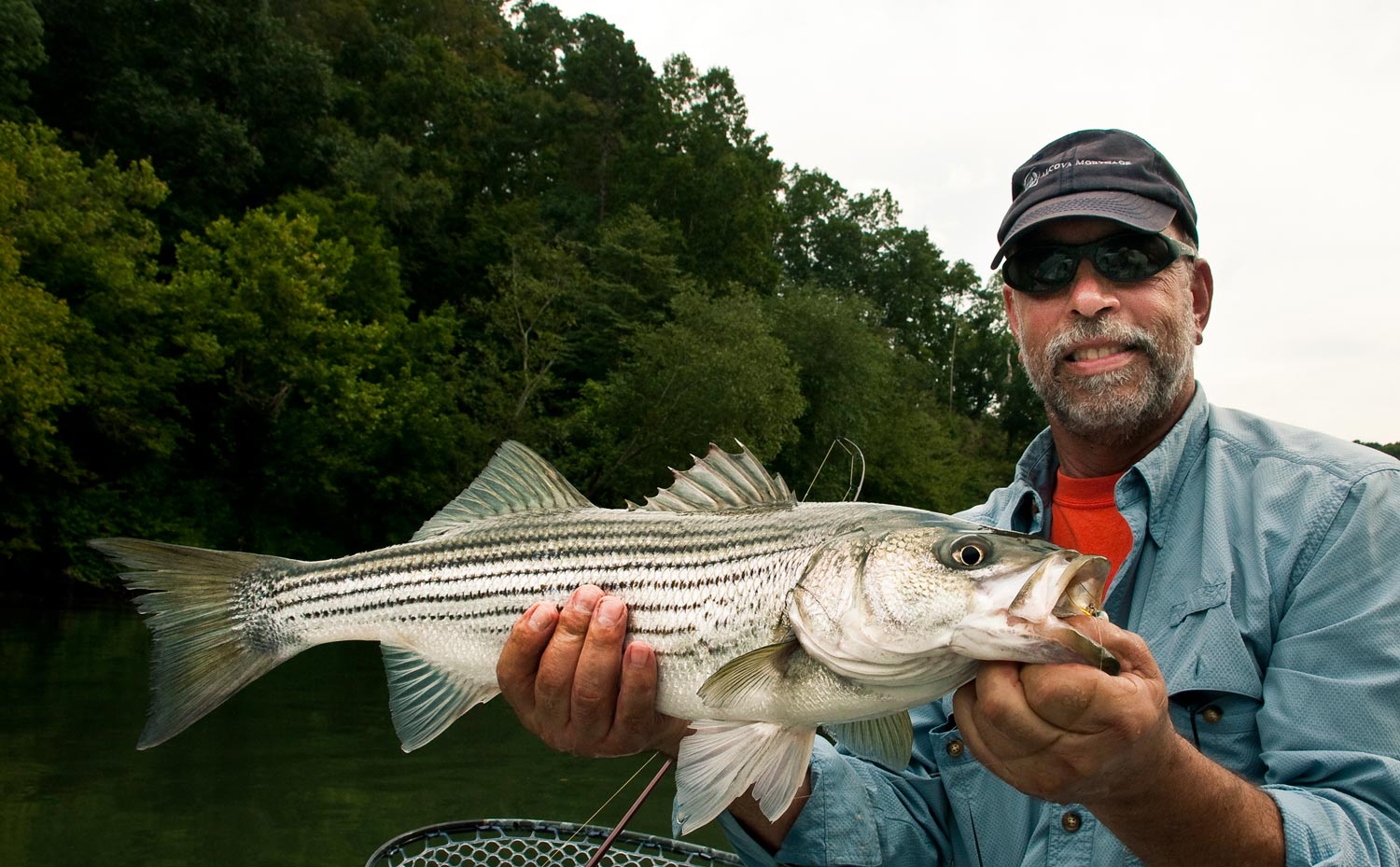
Well, here’s a first. Me sharing a gear angler’s content and proud to do it.
I was floating my brother, a devout gear angler, down a local river one day last summer. It was his first time fishing from a drift boat and, like most first timers, he was struggling with it a little. An hour or so in, I was offering some advice on how to present his plastic lure, a topic I know less than nothing about. He made one cast the way I suggested, gave the reel a few turns and said, “Now I just feel like I’m fishing a fly.” He did not get the entire sentence out before a nice striped bass inhaled his lure. I’m sure there is a lesson in that for both of us.
Coming from a mixed family this article on Gear Vs. Fly by Gary Strassburg, of The Informed Washington Sportsman, struck close to home. It’s an extremely well stated argument on a topic we have all butchered from time to time. Rather that offer any opinions of my own, I will just say that I enjoy a good latte, a single malt scotch and a Subaru and that you should read this article, no matter which side of the divide you fish from.
GEAR VS. FLY… WHY SO MUCH DIVISION AMONG ANGLERS?
Read More »Better Highsticking Video
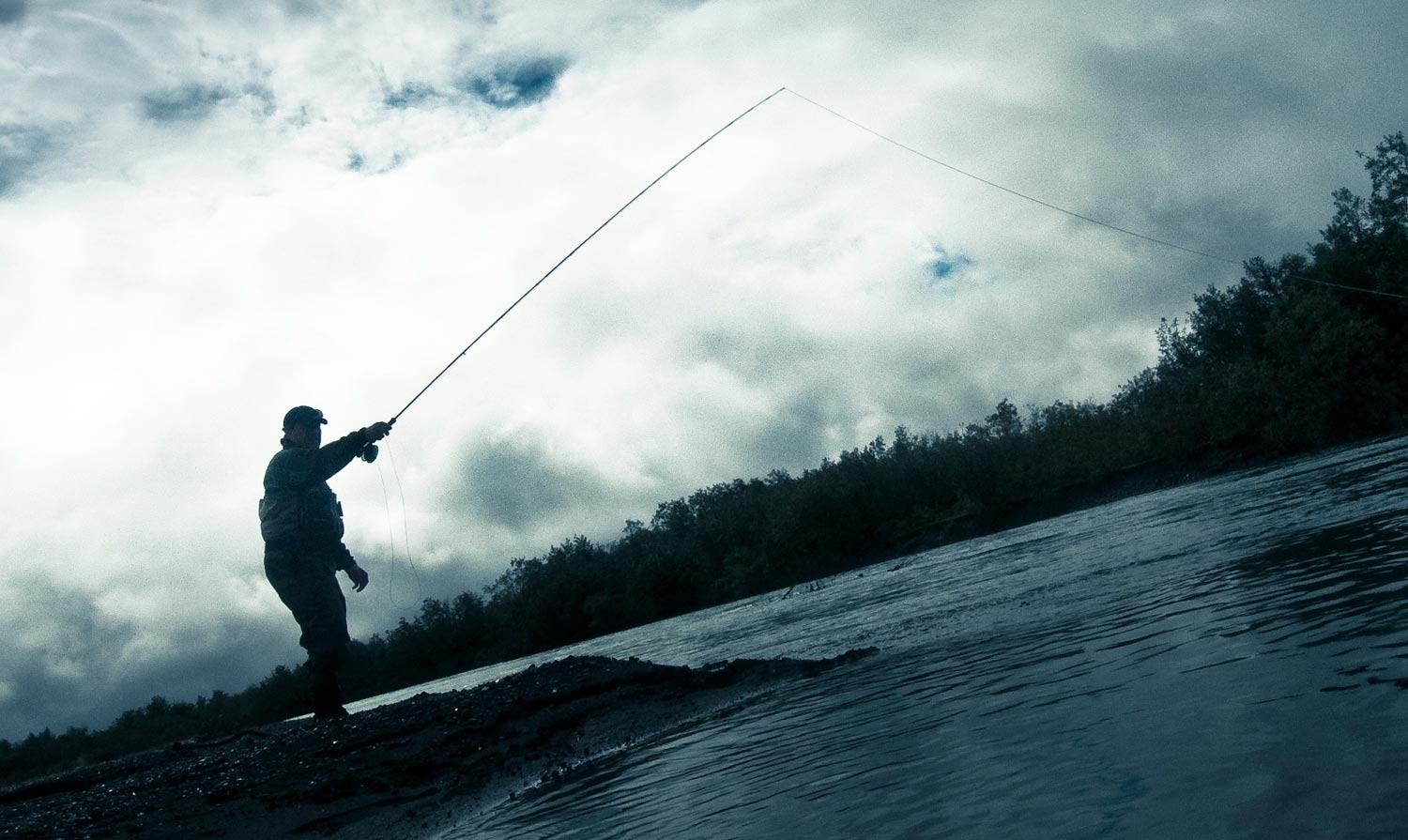
When fishing nymphs, highsticking is a fundamental skill that every angler needs.
The best way to achieve a drag free drift, when nymphing, is to use a technique called highsticking. Highsticking keeps your line completely off the water, eliminating any chance for drag. When done properly, it not only gives you a perfect drift but also puts you in a good position to make a fast and effective hook set.
There are a couple of key things about highsticking, which beginners frequently miss. The first is the mend. When you cast your flies upstream, it’s important to make a good initial mend that moves your Indecator. Many anglers are conditioned to be fearful of moving their indicator when mending but on this first mend its crucial. By moving the indicator upstream you are taking the tension off of your flies and allowing them to sink much faster. This puts you at your desired depth for your full drift.
It’s also important to keep the angle of your rod low enough that you have an ample range of motion to set the hook. Making the perfect drift doesn’t help if you have no where to go when the fish eats.
Highsticking isn’t just for nymphing. There are plenty of times when highsticking dry flies or dry dropper rigs is very effective. It’s a great skill to have.
CHECK OUT THIS VIDEO FOR MORE TIPS ON GETTING THE PERFECT DRIFT.
Read More »The Scott “Tie Something Different” Fly Tying Contest Winner

What Could You Make Out Of This?
It’s amazing what you can tie from the Dollar Store!
First let me say thank you to everyone who tied flies and entered the contest. I was blown away by the creative submissions we received. There was however a pretty clear winner.
I’M PROUD TO INTRODUCE TO YOU PETERSON’S DOLLAR STORE DIVER!
This beautiful dear hair diver was crafted by Eric Peterson using A pile of crazy materials including fake wigs and rhinestones from a Bedazzler. This diver pattern is as fishy as it is fantastic. Great job Eric!
It is worth mentioning that Eric is not the same Eric Peterson famous for the Peterson’s spawning shrimp pattern. I guess all guys named Eric Peterson are just awesome tiers.
Thanks to the folks at Scott Fly Rods for their generous support and thanks to everyone who entered.
Read More »If You’re Not Looking For Trout, You’re Missing Out
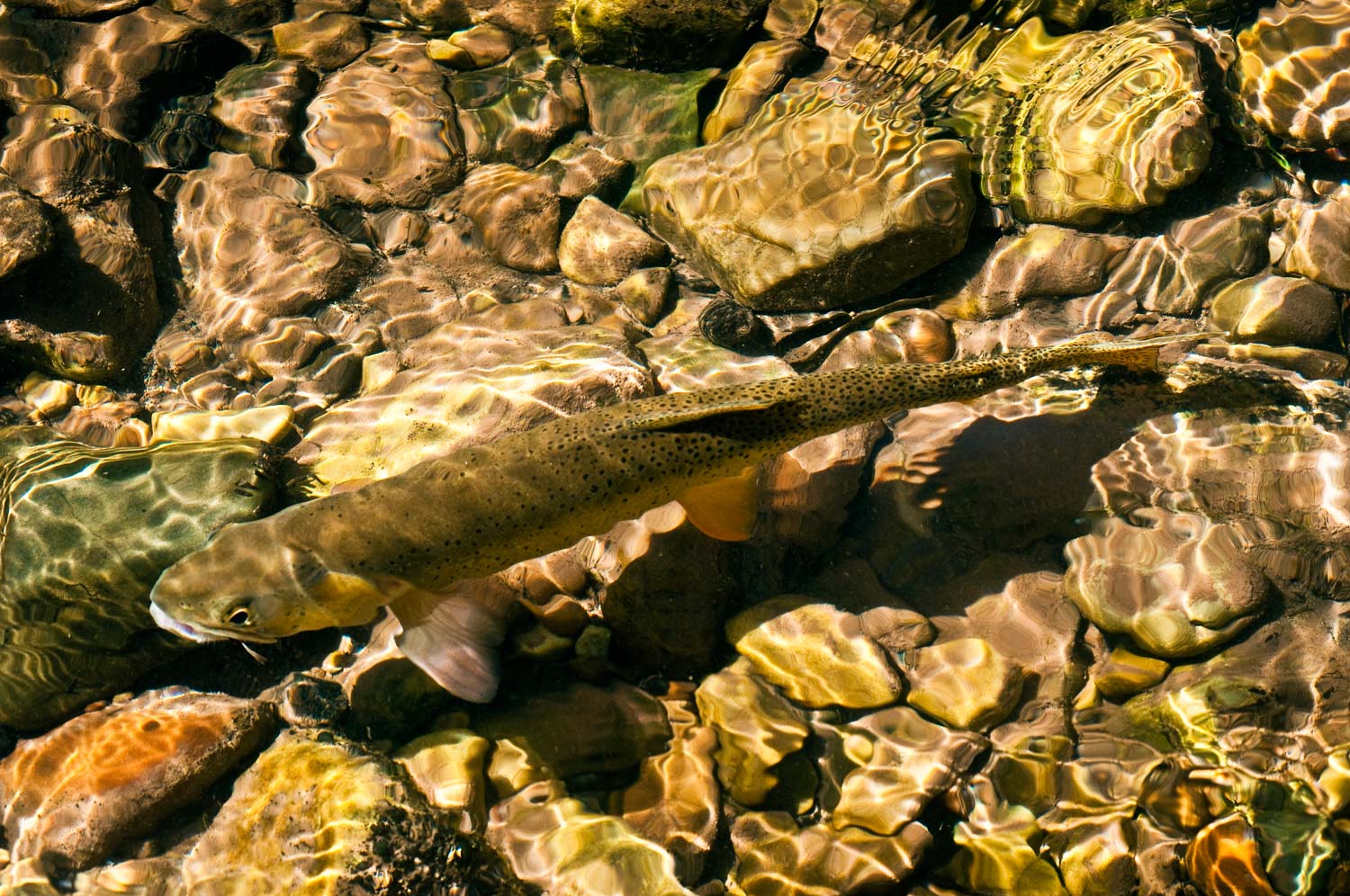
One of the things I always stress to my clients is the importance of always keeping an eye out for trout on the water. The first thing I do when I walk up to a prime piece of trout water, is take a minute or two to scan the water for dark shapes, shadows and subtle movements. I do it before I wet my fly or even my boots for that matter, because I know, if I can spot a trout, I’ll immediately double my chances at getting my rod bent. I also look for trout when I’m wading from one spot to the next. This is where many anglers mess up and get distracted by all the great looking water upstream of them, and then end up missing opportunities to spot and catch trout in transit. I used to spook a ton of trout myself moving from one fishing spot to the next. It still happens but not nearly as much because these days, when I’m on the move, I’m not in a hurry and I take plenty of time to look for trout as I wade.
Read More »